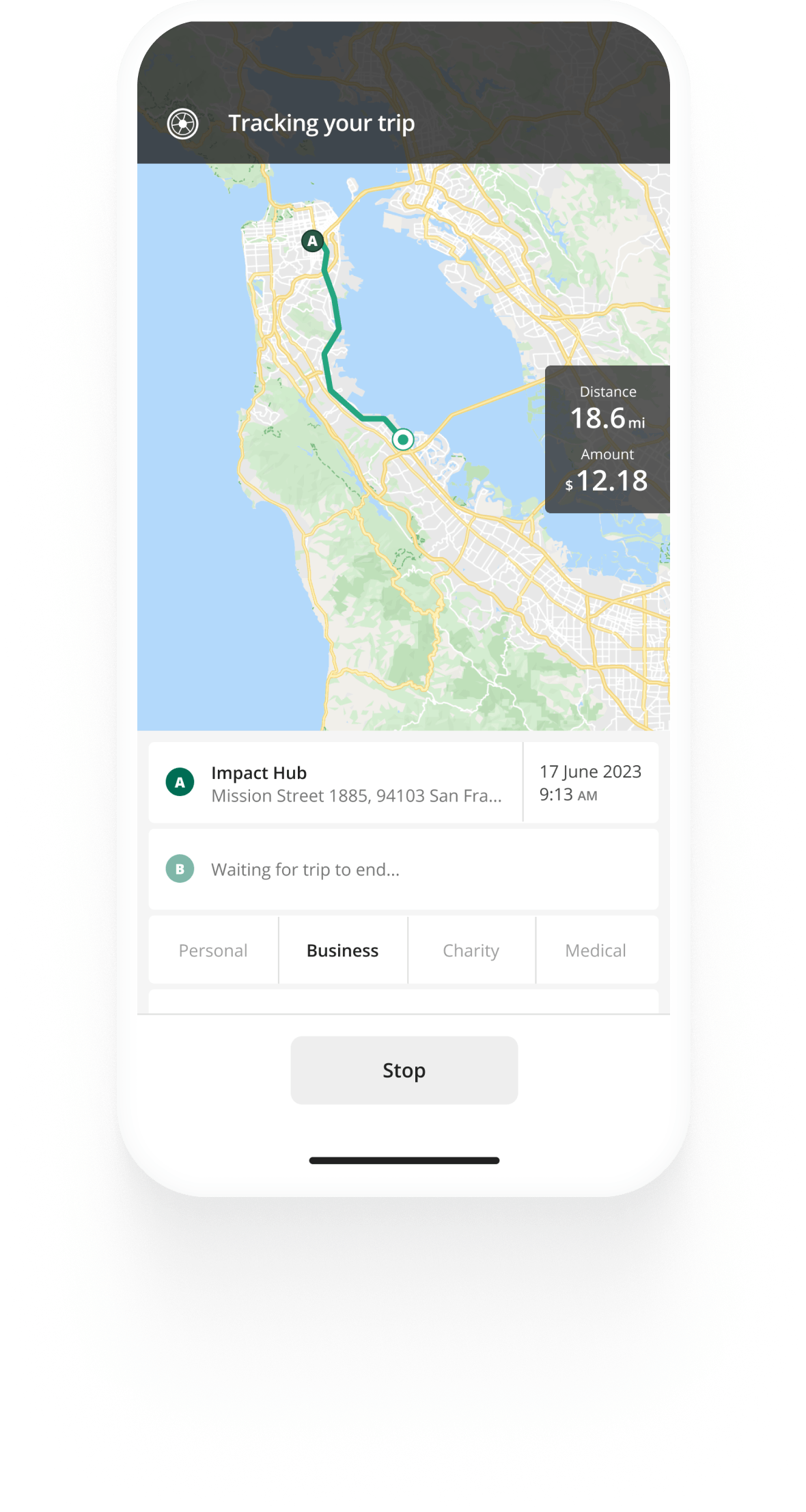Track mileage automatically
Get startedDriver's Daily Log Book
A driver’s daily log book, also known as a driver log, or daily log is a record of commercial drivers’ work hours and rest hours. A driver’s daily log is a mandatory record for all commercial drivers with a few exceptions, which we’ll explain later. Drivers must keep daily logs each day and should have 8 logs with them in the vehicle at all times.
What your driver log book should contain
The driver’s daily log must clearly show the driving, on-duty and resting hours for the day. The log should also include:
- The date and the total miles driven for the day
- The name of the carrier you’re working for and the main office address
- The license number or the assigned by the carrier number of the vehicle
- The name of your co-driver, if you have one and your signature
- Your time base - even if you cross other time zones throughout your workday, you should use your base time zone to log working hours
- The total hours for each duty status in a 24-hour window
- Remarks - listing the cities and state abbreviations every time you change duty status
- Shipping document numbers or shipper name and commodity


Mileage tracking made easy
Trusted by millions of drivers
Automate your logbook Automate your logbook

Automatic mileage tracking and IRS-compliant reporting.
Get started for free Get started for freeLogging total hours in your driver log book
Drivers must adhere to the regulations for hours of service. They are as follows:
- You must stop driving after the 14th consecutive hour of on-duty service
- Out of the 14 hours, you can’t spend more than 11 hours driving
- You must take a 30-minute break during the first 8 hours of being on duty
Finally, you should be aware of the 7 or 8-day work limit. If you operate on a 7-day rolling week, you cannot work for more than 60 hours in total, and if you work on an 8-day rolling week, you can’t work more than 70 hours in total.
Exceptions to keeping a driver’s daily log
The main exceptions when commercial drivers don’t need to fill out a daily log are:
- The 100 Air-Mile exception
The 100 air-mile exception states that drivers don’t need to fill out a daily log book if they drive within a 100 air-mile radius from their normal work reporting location, come back and are released from duty within 12 hours and follow all the basic hours of service regulations.
- The non-CDL short-haul exception
This exception applies when a commercial driver is driving a truck that doesn’t require a CDL, works within a 150 air-mile radius from the normal work reporting location and follows the basic hours of service regulations. With this exception, the carrier is obliged to keep records of the times the driver starts and finishes work, as well as the total on-duty hours each day.
Electronic logging devices have replaced the driver’s daily log
In 2017, Electronic Logging Devices (ELDs) became mandatory for most commercial drivers in the US. These devices connect to the truck’s engine to accurately measure the time a truck is in motion each day, and ensure drivers follow the hours of service regulations for their own safety.
Do you receive mileage reimbursement for your work-related driving? Find out more about reimbursement and deductions in our IRS mileage guide.
FAQ

Tired of logging mileage by hand?
Effortless. IRS-compliant. Liberating.
Related posts
IRS Mileage Guide
Latest update: April 24, 2025 - 10 min read
Mileage reimbursement in the US — rates and rules for employees, self-employed and employers in the US.
IRS Mileage
Latest update: December 23, 2024 - 2 min read
Find out what IRS mileage is and how you can claim it. See how much you can claim per mile from the IRS for your business-related driving.
DoorDash Background Check
Latest update: January 29, 2025 - 2 min read
Here’s what to expect when DoorDash conducts background checks, how Checkr works, and why it may take longer to get approved.

